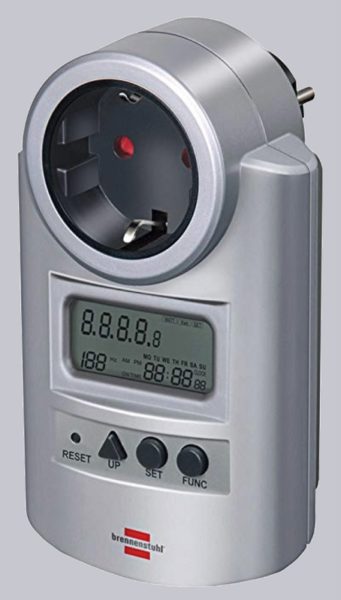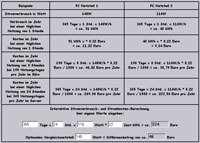
Power consumption of the ASRock Radeon RX 5700 Challenger D 8G OC graphics card …
For the measurement we use a standard energy cost meter from Brennenstuhl for this graphics card test as a power meter.

We measured the power consumption of the complete system in each of our 5 test scenarios. Since the 3 ASRock modes delivered approximately the same results, we have combined them into one scenario.
- ASRock Mode
- User Mode
- RAM OC
- RAM OC + powerlimit
- RAM and GPU OC
| test scenario | Power consumption |
| ASRock Mode | 277 W |
| User Mode | 306 W |
| RAM OC | 277 W |
| RAM OC + powerlimit | 281 W |
| RAM and GPU OC | 278 W |
The result once again confirms our previous statements: The individual ASRock modes differ only slightly from each other. The maximum power limit costs an above average amount of additional consumption for very little additional performance. After this test, the sweet spot in our eyes is the overclocking of the GPU and RAM without increasing the power limit. In the end we “only” talk about a difference of 30W. If it is worth the last percent more power, 30W will not deter you.
At the latest with the electricity bill you receives the receipt for a careless PC compilation, as our interactive power consumption calculator very nice shows.
With this you can calculate the electricity consumption and the electricity costs:

Interactive power consumption calculator
At this point it is also worth mentioning that the graphics card did not produce any audible coil whine. However, this can look completely different with the same graphics card. The fan noise was also very moderate … except of course 100%, but luckily that was over after 30 minutes 😉
Now we come to our conclusion about the ASRock Radeon RX 5700 Challenger D 8G OC graphics card.
ASRock Radeon RX 5700 Challenger D 8G OC result and general impression …

